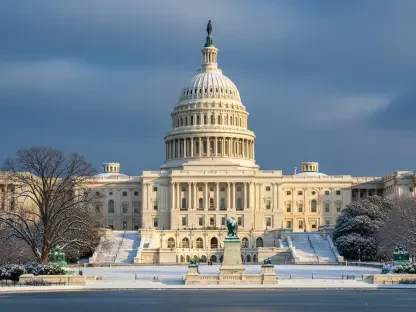The emergence of artificial intelligence as a cornerstone of technological advancement brings with it an inevitable clash between innovation and regulation. In light of President Donald Trump’s recently unveiled AI Action Plan, tensions mount as the United States attempts to navigate this delicate balance. This plan aims to propel the U.S. to the forefront of AI technology, stimulating innovation while battling the inherent challenges of regulation in a rapidly advancing landscape.
Navigating the AI Policy Landscape
The U.S. stands at a crossroads where the drive for AI excellence must be carefully orchestrated against a backdrop of regulatory frameworks. Historically, states have enjoyed considerable autonomy in crafting localized regulations to address the unique challenges AI presents in sectors like healthcare and transportation. Trump’s plan, however, redefines this regulatory narrative by encouraging a cohesive national strategy that could override disparate state regulations, sparking debates about state versus federal oversight.
Analytical Insights into Current Trends
Streamlining Innovation Through Federal Oversight
One of the key components of Trump’s AI Action Plan is the push for streamlined federal oversight with the intention of minimizing barriers to innovation. By unifying regulations under a national framework, proponents argue that it paves the way for more dynamic technological development. However, questions about the potential infringement on state rights continue to challenge the holistic adoption of this strategy, as states advocate for the preservation of their regulatory authority to manage AI technologies accustomed to their unique societal landscapes.
Assessing Risks and Regulatory Needs
A crucial aspect of the ongoing discourse is the inherent risk AI poses in sensitive areas, necessitating careful regulation. The Action Plan’s proposal to minimize state interference raises concerns among industry experts and civil groups committed to ensuring AI’s development does not compromise public safety and ethical standards. This tension reflects broader apprehensions about achieving a balance where innovation can flourish without sacrificing crucial oversight mechanisms.
Sector-Specific and Regional Considerations
AI’s integration into diverse sectors and regions calls for a nuanced approach to regulation. Innovations in agricultural technology or AI-driven diagnostics in healthcare each entail unique regulatory challenges that a uniform policy might overlook. There’s an acknowledged need for flexible regulatory frameworks that accommodate sector-specific requirements and regional discrepancies, ensuring AI applications align with localized priorities.
Future Trajectories and Competitive Positioning
The future of AI governance in the U.S. presents ongoing challenges as it contends with evolving technologies and international competition. On a global scale, countries like China are rapidly advancing their AI capabilities, prompting the U.S. to enhance its competitive edge within this growth sector. Prospective policy adjustments could see a convergence of federal and state efforts, fostering environments that support innovation without compromising ethical standards and safety protocols. Predictive insights indicate a gradual shift toward more synchronized regulations strengthened by cooperative federalism that still respects distinctive state contexts.
Strategic Pathways and Recommendations
As the analysis suggests, a critical pathway for authorities navigating the AI landscape is emphasizing collaborative dialogue between federal and state entities to align regulatory measures with shared national goals. It’s vital for businesses and professionals to remain attuned to shifting policy trends and actively partake in shaping adaptable and forward-looking regulatory frameworks. Industry stakeholders need to prioritize best practices and innovative solutions consistent with responsible AI development.
Recognizing the complexities involved in AI governance, strategies moving forward should strike a balance between technological innovation and regulatory compliance. By fostering multi-level cooperation and industry engagement, the U.S. aims to maintain a position that champions innovation, respects state autonomy, and safeguards societal values across the global stage.









